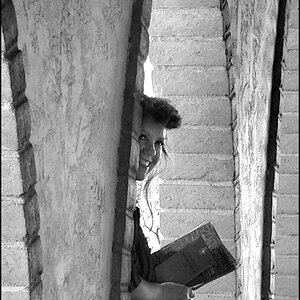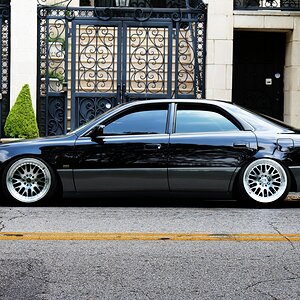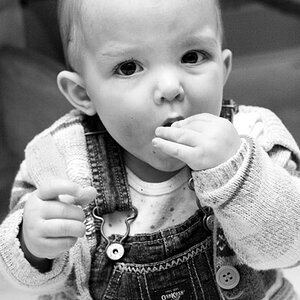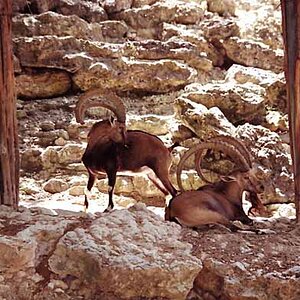kitty_kat
TPF Noob!
- Joined
- Aug 1, 2013
- Messages
- 7
- Reaction score
- 0
- Location
- Bahrain, Middle East
- Can others edit my Photos
- Photos OK to edit
Hi there.
I have a strange question...
I am somewhat new to DSLR photography. I know my camera terms and how my camera works, but I am just struggling to feel the confidence in using anything other than Auto...
Reason being is due to time.
I do a lot of kids parties and wedding in a particularly awkwardly-lit church. I am known for getting the best facial shots and emotions and just basically getting perfectly timed shots that other photographers miss by a second.
The thought of missing a shot because I am trying to sort out my ExComp etc just freaks me out.
As an example. In the church where I shoot, there is a huge stained glass window up in the front of the church and depending on where I'm aimed at for the couple, the difference in light is crazy. Then if I turn to view the congregation or the front of the couple, the room is extremely dark. So if I'm going back and forth, changing my settings is just so time consuming, and I'll be staring at my little screen more than taking pics. If time were not an issue, I could set up the shot with no problem... but these are moments that cannot be put on hold.
Maybe someone will tell me I don't know my camera settings well enough. Maybe I am just doomed to shoot in auto forever... but like I said, although I know my camera, I am not fast at calculating DOF in my head and figuring out the best ISO:Fstop:Shutter value for that particular shot when the moment is only a second long.
How the heck do pro's do it? Do the pro's mentally know their DOF ranges with the different lenses they use at different F stops etc? Do they turn on and off the manual focus for high speed moving subjects (no flash). Do they just have trigger happy fingers and hope for the best? (chuckling at the daggers being thrown at me with that comment lol)
I'm just feeling a bit daunted, cause I really want to be the best in my field, but I feel like there is a piece of the puzzle missing for me to open that next door.
Any help will be greatly appreciated.
Claire
I have a strange question...
I am somewhat new to DSLR photography. I know my camera terms and how my camera works, but I am just struggling to feel the confidence in using anything other than Auto...
Reason being is due to time.
I do a lot of kids parties and wedding in a particularly awkwardly-lit church. I am known for getting the best facial shots and emotions and just basically getting perfectly timed shots that other photographers miss by a second.
The thought of missing a shot because I am trying to sort out my ExComp etc just freaks me out.
As an example. In the church where I shoot, there is a huge stained glass window up in the front of the church and depending on where I'm aimed at for the couple, the difference in light is crazy. Then if I turn to view the congregation or the front of the couple, the room is extremely dark. So if I'm going back and forth, changing my settings is just so time consuming, and I'll be staring at my little screen more than taking pics. If time were not an issue, I could set up the shot with no problem... but these are moments that cannot be put on hold.
Maybe someone will tell me I don't know my camera settings well enough. Maybe I am just doomed to shoot in auto forever... but like I said, although I know my camera, I am not fast at calculating DOF in my head and figuring out the best ISO:Fstop:Shutter value for that particular shot when the moment is only a second long.
How the heck do pro's do it? Do the pro's mentally know their DOF ranges with the different lenses they use at different F stops etc? Do they turn on and off the manual focus for high speed moving subjects (no flash). Do they just have trigger happy fingers and hope for the best? (chuckling at the daggers being thrown at me with that comment lol)
I'm just feeling a bit daunted, cause I really want to be the best in my field, but I feel like there is a piece of the puzzle missing for me to open that next door.
Any help will be greatly appreciated.
Claire
Last edited:


![[No title]](/data/xfmg/thumbnail/33/33027-0118cfc4034a37ef267ca6f8aa2fe04a.jpg?1619735841)

![[No title]](/data/xfmg/thumbnail/42/42466-109a1021e2f0f132abfd74e1a6e39444.jpg?1619740192)

![[No title]](/data/xfmg/thumbnail/32/32926-ec27ecead8c80d803404500d8f888dbf.jpg?1619735754)


![[No title]](/data/xfmg/thumbnail/30/30861-fee88082ba36d0c3b443492fe3f3f1cd.jpg?1619734481)

![[No title]](/data/xfmg/thumbnail/32/32929-22e23acc63d6ecb25e5ee941be87121f.jpg?1619735758)

